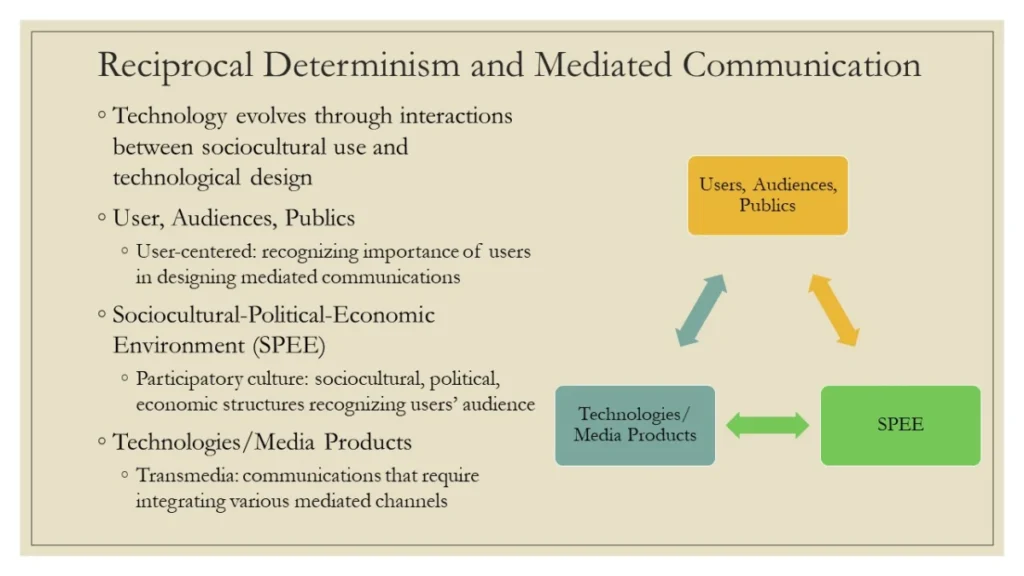
Reciprocal determinism is a foundational concept in psychology, introduced by Albert Bandura as part of his social cognitive theory. It emphasizes the interplay between personal factors, environmental influences, and behaviors, all of which interact in a continuous, reciprocal loop. This dynamic interaction highlights how individuals shape their environment and are simultaneously shaped by it. A concise summary of reciprocal determinism would be:
“Reciprocal determinism explains how a person’s behavior is influenced by personal factors and their environment, while these behaviors and external conditions also influence the person.”
This article will delve into the components, significance, and real-world applications of reciprocal determinism, followed by a detailed table summarizing key features and specifications related to the concept.
Understanding Reciprocal Determinism
The Three Core Components
- Personal Factors:
These include an individual’s thoughts, beliefs, emotions, and biological traits. For instance, self-confidence and past experiences influence how a person approaches challenges. - Environment:
External circumstances, social settings, and cultural norms constitute the environment. These external factors create opportunities and constraints that shape an individual’s actions. - Behavior:
Behavior refers to the actions or responses of an individual. These behaviors, in turn, affect personal factors and the surrounding environment.
How Reciprocal Determinism Operates
Reciprocal determinism suggests that:
- Personal factors influence behavior: A confident student may actively participate in classroom discussions.
- Behavior influences the environment: The student’s active participation can foster a more engaging learning environment.
- Environment influences personal factors: Positive reinforcement from teachers and peers can boost the student’s confidence, completing the loop.
Real-World Applications
- Education: Teachers can create supportive environments to encourage positive behaviors in students, who may, in turn, shape the classroom dynamic.
- Therapy: Therapists often work on altering one of the three components—personal beliefs, environment, or behavior—to break negative cycles.
- Workplace: Employers can leverage reciprocal determinism by fostering a positive work environment that encourages productive behaviors and supports employee well-being.
Criticisms and Limitations
While reciprocal determinism provides a robust framework for understanding human behavior, it has its limitations:
- Complexity: The interactions among personal, environmental, and behavioral factors can be difficult to study and quantify.
- Overemphasis on Cognition: Critics argue that Bandura’s theory may underestimate the role of biological influences.
Table: Features and Specifications of Reciprocal Determinism
| Feature | Description | Example |
|---|---|---|
| Personal Factors | Internal traits such as beliefs, values, emotions, and genetic predispositions. | A person’s self-confidence can determine how they interact in social settings. |
| Environment | External conditions including cultural norms, social influences, and physical surroundings. | A workplace that encourages creativity boosts employee engagement. |
| Behavior | Observable actions or responses that influence and are influenced by the other two components. | A person’s proactive behavior can create a more positive environment. |
| Interaction Dynamics | Continuous feedback loop among personal factors, behavior, and the environment. | A child’s learning behavior is shaped by teaching methods, which are influenced by the child. |
| Practical Applications | Areas like education, therapy, and organizational behavior where the model is applied effectively. | A teacher adjusting methods to better suit a student’s needs, improving both outcomes. |
| Key Strengths | Emphasizes the dynamic and reciprocal nature of human behavior. | Acknowledges the multifaceted nature of personal development and environmental adaptation. |
| Limitations | Criticized for its complexity and underemphasis on biological factors. | Studying the interactions quantitatively poses challenges. |
FAQs About Reciprocal Determinism
1. How does reciprocal determinism differ from determinism?
Reciprocal determinism incorporates agency, suggesting individuals actively shape and are shaped by their environment. In contrast, determinism views behavior as predetermined by external or internal factors alone.
2. What are examples of reciprocal determinism in daily life?
- A child learns a new language (behavior) due to a multicultural environment and personal interest (factors).
- Employees innovate (behavior) in a supportive workplace, influenced by their intrinsic motivation.
3. How does reciprocal determinism apply to mental health?
By altering one aspect—such as behavior—therapists can initiate changes in personal factors and environments, promoting overall well-being.
4. Is reciprocal determinism relevant in the digital age?
Absolutely! Social media provides a modern context where user behavior shapes algorithms (environment), which then influence personal factors like preferences and habits.
Conclusion
Reciprocal determinism is a comprehensive framework for understanding human behavior through the interplay of personal factors, the environment, and behaviors. Its versatility in real-world applications, from education to therapy, underscores its enduring relevance. While not without criticism, the model’s emphasis on dynamic interactions offers profound insights into personal and societal development. Understanding and applying reciprocal determinism can empower individuals to create positive feedback loops in their lives, fostering growth and adaptability.



